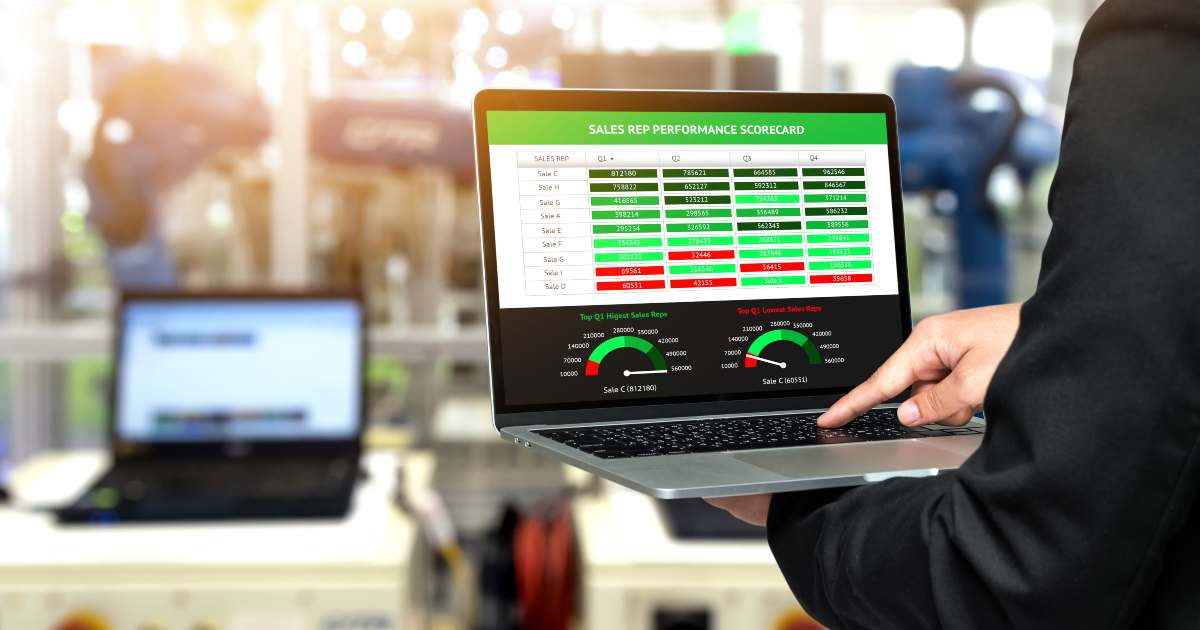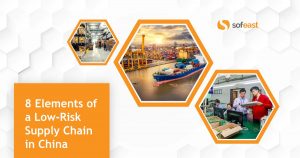Most purchasers pay too much attention to the price of what they buy but fail to take risks into account. That’s a very widespread issue. One solution to this might be developing a supply chain KPI scorecard, to force buyers to report on how risky the supply chain they are building really is.
After all, setting up a solid supply chain is an important objective isn’t it? This is what we are going to cover here.
Note: This is the third article in this series on supply chain risk management. In part 1 I covered “Black Swan events”, and in part 2 I covered the business continuity plan.
The concept of a balanced scorecard
The term “balanced scorecard” comes from an HBR article and a book written by Kaplan and Norton. They suggested top management to look at these 4 perspectives at the same time:
- Financial: how do we look to shareholders?
- Customer: how do customers see us?
- Internal processes: what must we excel at?
- Innovation & learning: can we continue to improve and create value?
One key benefit of such an approach is that executives don’t focus exclusively on financial metrics (which is very tempting because it is so easy to measure), at the expense of what will drive company success in the mid-to-long term.
Similarly, if procurement officers are only rewarded based on the savings they generate, it can lead to a much higher overall cost for the company. Here are a few examples of perverse effects:
- Destruction of the supplier base (by constantly lower-price sources) leads to serious quality and delivery issues;
- Seeking the lowest price may lead to becoming totally dependent on 1 supplier or 1 geographical area, and raises the risk of discontinuity of supply;
- Buying a large quantity in advance, just to negotiate some extra savings as part of a “deal”, may lead to many extra costs: warehousing, inventory depreciation (lost, damaged…), quality issues discovered too late, etc.
What should purchasers be accountable for?
“What you measure is what you get”, as Kaplan and Norton remind us. So, the question is, how to measure the performance of the purchasing function?
- Keeping suppliers’ prices under control is one key indicator, naturally, but it can’t be the only one.
- Ensuring the whole supply chain is not excessively exposed to risk must be taken into account.
- Access to new technologies from suppliers, or taking advantage of co-engineering work opportunities, may be an important indicator for some companies.
- The list goes on… It has to be tailored to each company’s needs. Make sure to include also internal procurement processes (e.g. PO accuracy, speed to go from PR to accepted PO) and supplier performance. Here are some other ideas.
I should add that agreeing on just 3 or 5 indicators is usually better than tracking 10 or 20 indicators.
How to turn “Risk” into measurable indicator(s)?
I can see several indicators that would make sense for many companies that import products from China, Vietnam, Turkey, or Mexico.
Supplier risk – a well-capitalized established manufacturer with mature systems & processes is inherently safer than a small trading company. We will cover the supplier risk in another article in this series.
Product risk – Do reliability validation test results show confidence in the product’s reliability & durability? Was the product developed based on a structured NPI/APQP process? Or do we have very little idea how likely it is to fail early?
Country/political risk – this is something we can no longer ignore, with all the initiatives in the US Congress to curb (and, in some instances, to cut entirely) trade with China. We will cover this topic in an upcoming article.
Supply Chain risk – this can be a composite indicator based on evaluations of:
- How long the supply chain is (e.g. components from China, sold in the USA, is quite long);
- How complex the supply chain is (e.g. components from 25 suppliers is getting quite complex);
- How concentrated the sources of supply are (higher exposure to 1 factory being hit by disaster means higher risk);
- How disjointed the players are (if the feedback moves slowly from retailer to importer to tier 1 to main tier 2 suppliers, and if reactions are slow too, it is much less agile and less resilient);
- How in-adaptive the players are (if a key supplier is only set up for large batch & long queue manufacturing runs, it makes any reaction take longer).
Can supply chain risk be evaluated in general, and integrated in a general scorecard?
Different markets have:
- Different lead time requirements (for ordering the first time, and for re-ordering)
- Different customization needs
- Different forecast horizons and accuracies
- Different tolerances for delays or breakdowns
All this may call for a tight and responsive supply chain, or for a simple and robust foundation. That should be the basis for designing and setting up your network of suppliers!
Does this mean “get a lot of production out of China ASAP”?
If you sell some of the products in China, and many components are hard to source outside of China, it will be difficult and may not make sense. Each company’s situation is different.
However, CNBC reports that a lot of companies are planning to reduce their exposure to China:
A recent survey conducted by EY showed that over 67% of senior executives in the Asia Pacific were already thinking of diversifying their supply chain and the role that China would play in this new diversification, said Winter.
Diversifying the supply chain would mean increasing the range of suppliers a factory might choose to order from. Considerations include the additional costs involved, how quickly they should act, and how sustainable supplies from there would be.
“What we saw over a couple of decades is a centralization of supply chain and China played into that very heavily — low production cost, low labor cost,” said Winter.
The new decentralized global supply chain will mean more connectivity among various centers via technology, he added.
The considerations for supply chain management will still center around cost, quality and delivery — but additional factors that businesses are considering now include resilience, responsiveness and flexibility, said Winter.
Can all these risks be mitigated by keeping more inventory?
In a sense, yes. But it does not solve all the problems and creates other risks. We will cover this in the next article in this series.
P.S.
Learn more about Supply Chain Risk Reduction Strategies here.
8 Elements of a Low-Risk Supply Chain in China
This FREE webinar will empower you to transform your supply chain in China to reduce risks. Two industry experts, Renaud Anjoran and Paul Adams from Sofeast, talk you through how to gain control over your product’s quality, on-time shipments, long-term pricing stability, and continuity of supply.
Ready to watch? Register by hitting the button below:


